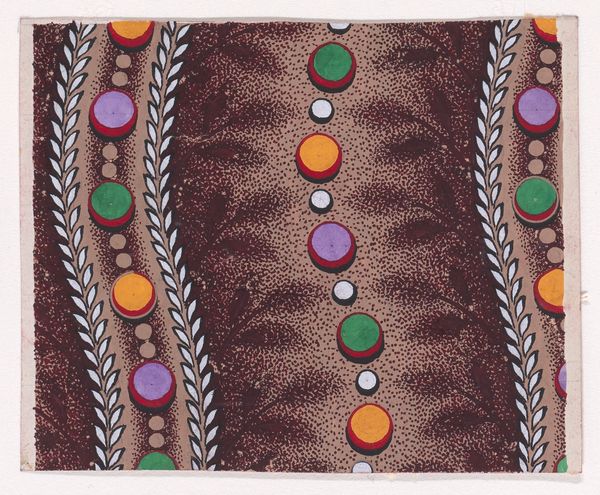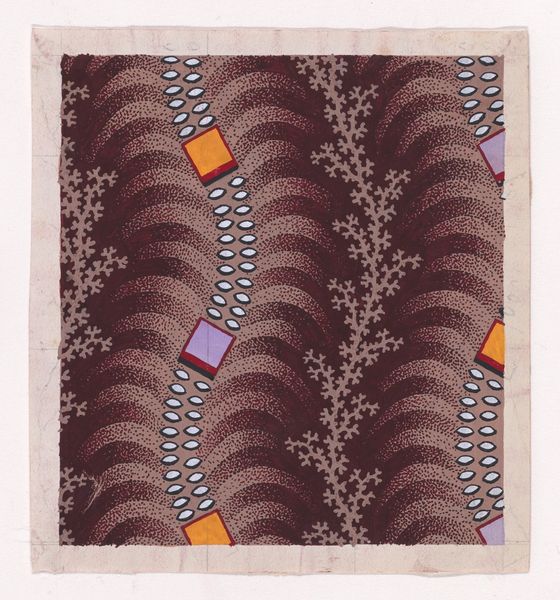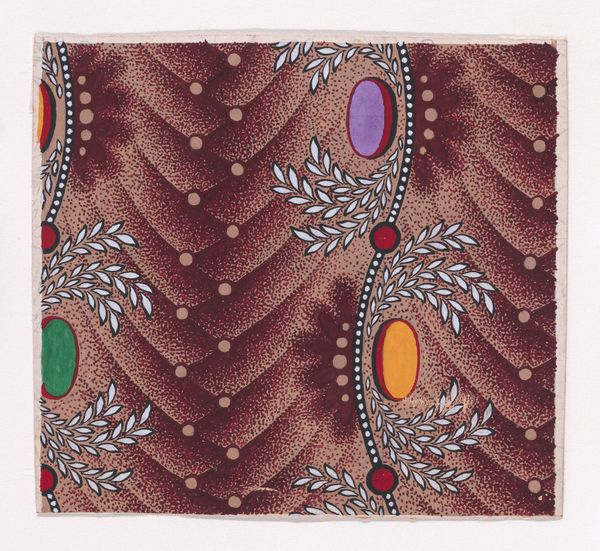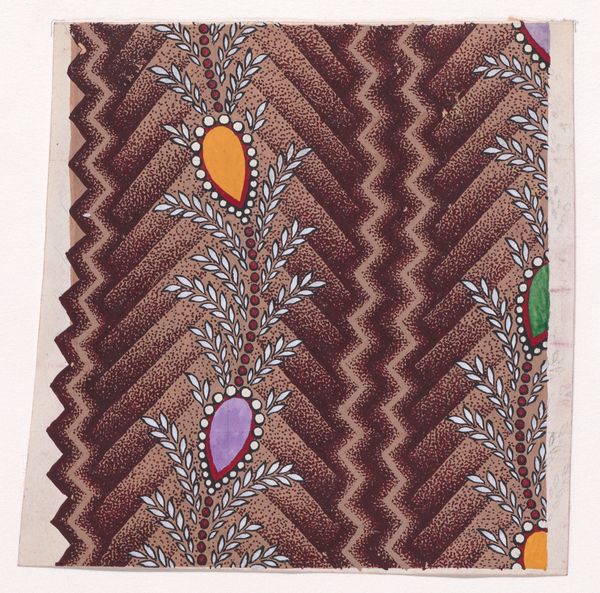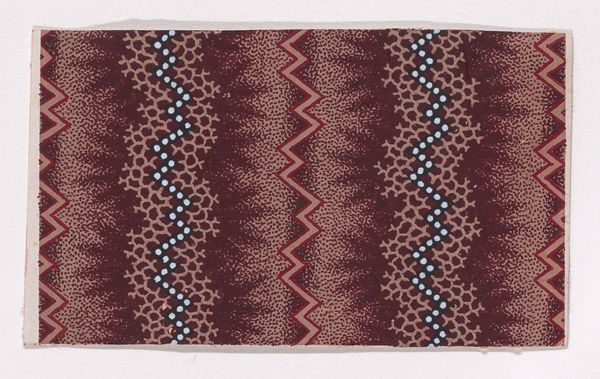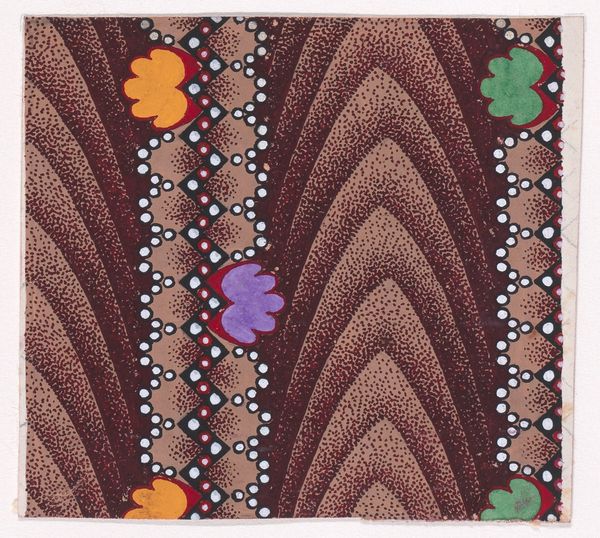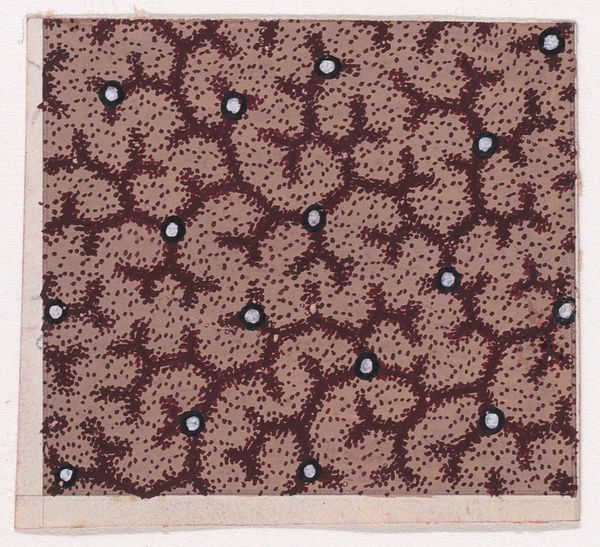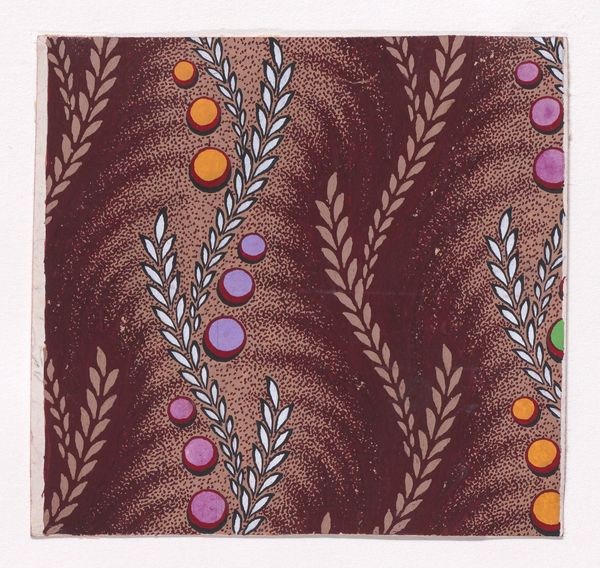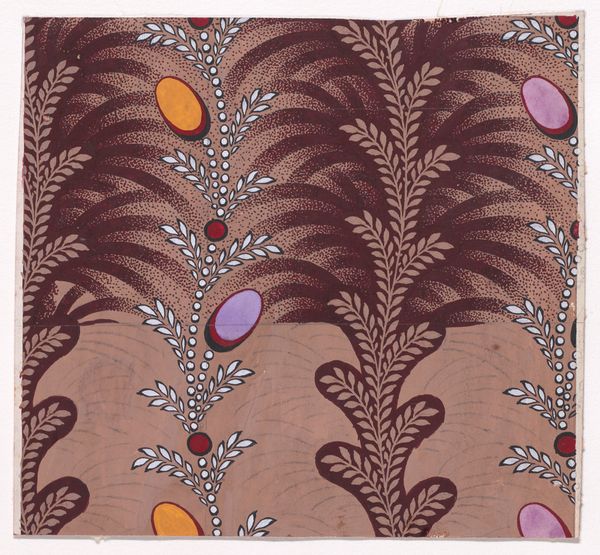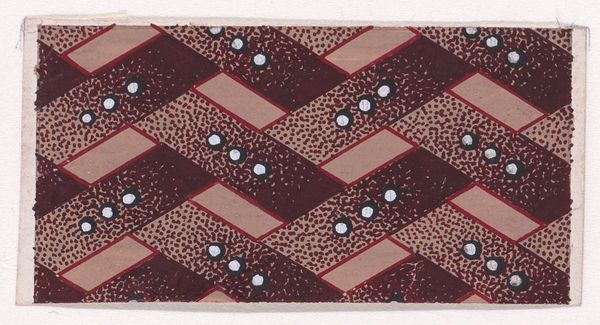
Textile Design with Vertical Stripes Framed by Strips of Ovals, Pearls and Stylized Leaves over a Stippled Background 1840
0:00
0:00
drawing, textile
#
drawing
#
natural stone pattern
#
naturalistic pattern
#
textile
#
fashion and textile design
#
pattern background
#
flower pattern
#
repetition of pattern
#
pattern repetition
#
textile design
#
imprinted textile
#
layered pattern
Dimensions: Sheet: 2 3/16 × 2 3/8 in. (5.5 × 6.1 cm)
Copyright: Public Domain
Editor: So, here's "Textile Design with Vertical Stripes Framed by Strips of Ovals, Pearls and Stylized Leaves over a Stippled Background," from 1840. It's an anonymous drawing, likely intended as a print for textiles. The mix of naturalistic and geometric patterns is striking, but what can we say about the forces at play here? How do we interpret a piece like this beyond just a pretty pattern? Curator: That’s a great question. This design reveals a lot about 19th-century social structures. Think about where textiles were used: clothing, home décor. Who was buying these materials, and what messages were they sending? Were these patterns accessible across social classes, or did design and material signify status? Editor: I see what you mean. So, it's not just about aesthetics but also about social communication. Was the style reflective of the cultural norms? Curator: Precisely. Mass production made these images widely available. Looking at the repetition, the stylized natural forms... How do they reflect contemporary ideals of beauty, order, and even colonial relationships given sourcing of raw materials, dyes and where such patterns were ultimately popular. Does this design suggest anything about social values or economic realities? Editor: I never thought about pattern this way, as embedded in all these different power structures. Curator: Consider the role of institutions like design schools or even international expositions. They showcased and promoted particular styles, further influencing production. How might such structures have shaped the dissemination and perception of design like this? Editor: This completely changes how I view textile design. I used to think of them just as decorative arts. Curator: Understanding art as intertwined with broader social, cultural, and economic systems can reveal hidden narratives. We begin to unravel meaning far beyond the surface pattern. Editor: Right. Thank you – I definitely have a lot more to think about now!
Comments
No comments
Be the first to comment and join the conversation on the ultimate creative platform.

